Recent studies and minimal anecdotal sources suggest that some autistic people may benefit from the medicinal effects of Cannabis. However, more research is needed to support this claim.
There is a difference in how autistic people’s brains function when compared to those that do not have Autism Spectrum Disorder, so medicines affect each person differently. For example, Autistic people may behave, interact, and learn in a way that deviates from people without ASD.
Having autism can lead to repetitive behavioral patterns and difficulties in social situations and cause delayed language development, hyperactivity, seizures, and gastrointestinal problems.
Traditional medications can alleviate some symptoms of ASD, but not always, which is why many are turning to cannabis as an alternative treatment option.
Continue reading to learn more about Autism Spectrum Disorder and cannabis use, including benefits and risks, as well as other alternative ways of treating specific symptoms.
A History of Cannabis as Medicine
Medical marijuana has been used for centuries to heal the mind, body, and soul of humans. From Ancient Egypt and China to the present-day United States, Cannabis has been considered medicine for as long as civilizations have recorded information.
- 1840: Marijuana became widely approved in mainstream medicine and was sold in over-the-counter medications.
- 1850: The U.S. Pharmacopeia added marijuana to their list. Healthcare providers use it to treat opioid withdrawal, chronic pain, appetite loss, and nausea.
- 1906: The Food and Drug Act demanded that all cannabis products state this on their labeling.
- 1900-1930: People used marijuana in the mainstream medical community for health benefits for years. However, that changed as it became associated with Mexican immigrants. Due to their recreational drug use, anti-drug advocates promoted fear and prejudice by labeling it the “Mexican Menace.”
- 1914-1925: A widespread prohibition effort encouraged twenty-six states to pass laws prohibiting Cannabis.
- The 1930s: The Great Depression resulted in an employment loss for thousands of Americans. Mainstream media began falsely reporting that marijuana use was linked to crime and violence. At the same Harry Anslinger started a campaign to criminalize marijuana, claiming that it led to psychosis. As a result of these combined efforts, by 1936, all states had introduced marijuana regulation laws.
- 1936: Reefer Madness debuted, showing marijuana as a drug that could lead to extreme violence and mental disorders.
- 1937: The Marijuana Tax Act was passed, restricting cannabis use to those who could afford a significant excise tax.
- 1942: The U.S. Pharmacopoeia removed marijuana from their list, and physicians began to discredit marijuana as having little to no medicinal use.
- 1944: The New York Academy of Medicine published a report stating that classic marijuana strains had only mild psychoactive effects. The public did not receive it well.
- 1952: The Boggs Act established significant penalties for marijuana offenses.
- The 1960s: Marijuana gained popularity among college students, activists, hippies, and more. President Kennedy and Vice President Johnson detailed reports that found that marijuana was not a gateway drug, nor did it encourage violence.
- 1970: Congress approved the Controlled Substances Act, which placed marijuana as a Schedule I controlled substance. This law made it difficult to study marijuana for its’ medicinal benefits. However, Oregon, Maine, and Alaska still re-decriminalized marijuana.
- 1976: The parents’ movement against marijuana was started.
- 1982: Nancy Reagan founded the “Just Say No” campaign.
- 1983: The Drug Abuse Resistance Education program was created, but the government later cut the DARE program’s funding as research proved inadequate for preventing youth from using drugs.
- 1986: President Reagan passed The Anti-Drug Abuse Act raising penalties for marijuana use.
- 1989: President George H.W. Bush campaigned for a “New War on Drugs.”
- 1996: California approved Prop 215, legalizing Cannabis for medicinal use at the state level.
- The 2000s: Thirty-six states plus Washington D.C. have legalized or decriminalized weed. It is still federally illegal; however, marijuana advocates are fighting hard to pass legalization bills.
Regional Uses Over Time
- Egypt– glaucoma, and inflammation
- China- over 100 cannabis medications for different ailments
- India– Anti-phlegmatic qualities, anesthetic, leprosy, dysentery, fever, cognitive functions, sleep assistance, spiritual uses
- Greece– inflammation, earaches, swelling, spiritual rituals
- Rome– gout, arthritis, chronic pain
- Arabia- chronic pain, migraines, syphilis
- England– menstrual cramps, childbirth, muscle spasms, convulsions, insomnia
Psychological Healing
Medical Cannabis has been used to treat mood disorders, anxiety, depression, PTSD, and more. Certain strains can produce feelings of happiness, euphoria, and an overall sense of calm that is otherwise unachievable.
Cannabis has served as an entheogen for physical and spiritual healing dating back approximately as far back as 2000 B.C. Spain introduced weed to the New World in the 1500s.
Cannabis use in many shamanic and pagan cultures helped them create profound spiritual experiences related to their society, achieve enlightenment, and reveal mysterious facts about the human mind and subconscious.
Entheogens are psychoactive substances that alter perception, mood, consciousness, cognition, or behavior to engender spiritual development. An anthropological study has established that entheogens have always been used for spiritual purposes across the globe.
Types of Cannabis plants
- Indica plants produce airy, more developed buds than Sativa. It originates from the Kush region near Afghanistan and is from a colder, mountainous climate. Indica leaves are shorter and bushy and have dark, whole leaves, and clumpy buds. It has higher THC and lower CBD and is known for its relaxing high. This weed is excellent for nighttime due to its physical high and pain-relieving effects.
- Sativa weed plants are from the warmer climates, producing tall, long leaves and dense, thick buds during the flowering stage. Cannabis sativa has more CBD cannabinoids and less THC and is the perfect strain to consume in the morning due to its energetic, cerebral high.
- Hybrids are cross-germinated from two different strains to form a combination of Indica and Sativa. Typically, one or the other will be dominant and will, in turn, produce the effects experienced by the user. Hybrid strains of Cannabis remain prevalent and offer a more balanced high.
- Hemp is legal in the U.S., thanks to the Farm Bill of 2018. It is low in THC, causing little to no psychoactive effects. Ruderalis is from Russia, is an auto-flowering plant, and has short, thin stems with large leaves. Hemp is more similar to Indica and Sativa but doesn’t produce much THC. Hemp is used in the textile industry to produce alternative cannabinoids, such as CBD and CBG.
What is a Cannabinoid?
Cannabinoids are found in the cannabis plant and are produced naturally by the human body. We have an endocannabinoid system (ECS) that internally produces cannabinoids.
The two most commonly known cannabinoids in Cannabis are tetrahydrocannabinol (THC) and cannabidiol (CBD). The word cannabinoid can refer to THC or any chemical that acts on cannabinoid receptors.
What is the Endocannabinoid System?
The endocannabinoid system is comprised of an extensive network of chemical signals and cellular receptors densely packed throughout our brains and bodies. The “cannabinoid” receptors in the brain — the CB1 receptors — outnumber many other receptor types in the brain.
They act like traffic cops to control the levels and activity of most of the other neurotransmitters. This is how they regulate things: by immediate feedback, turning up or down the movement of whichever system needs to be adjusted, whether hunger, temperature, or alertness.
Our bodies produce molecules called endocannabinoids to stimulate these receptors, which have a structural similarity to molecules in the cannabis plant. The first endocannabinoid discovered was named anandamide after the Sanskrit word ananda for bliss.
All of us have tiny cannabis-like molecules floating around in our brains. The cannabis plant, which humans have been using for about 5,000 years, essentially works by hijacking this ancient cellular machinery.
What does the ECS do?
The endocannabinoid system regulates and controls learning and memory, emotional processing, sleep, temperature control, pain control, inflammatory and immune responses, and eating. This vital system is currently at the center of renewed international research and drug development.
What Does a Cannabinoid Do?
Cannabinoids from the cannabis plant have been used for hundreds of years to alleviate symptoms of different health ailments. They act on and bind to cannabinoid receptors in the body and trigger different responses.
There are specific receptors that can be used to manage medical conditions when using Cannabis. For example, they have been known to help with diseases such as Alzheimer’s disease, epilepsy, chronic pain, and cancer by reducing inflammation.
Cannabinoids act by mimicking a natural endocannabinoid system like anandamide, which are fatty acids that activate cannabinoid receptors. Cannabinoids bind themselves onto fat-soluble molecules that enter a cell’s lipid bilayer.
Cannabinoids then attach themselves to what are called CB1 and CB2 receptors. When the proper connection between cannabinoid and receptor is made, the body is stimulated to have a particular response.
Psychoactive Effects Of Cannabinoids
The effects of cannabinoids vary from person to person, depending on an individual’s biology and cannabinoid receptor type. Not everyone experiences the same results when consuming cannabinoids, and the intensity of those effects also varies. Some people feel relaxed and happy after cannabinoid consumption, while others may feel sleepy or tired.
It is important to remember that cannabinoid use should be approached cautiously, as it can have adverse side effects, especially when consumed in high doses. If you are thinking of trying Cannabis or its cannabinoid chemicals, it is best to speak with a healthcare professional who can help you determine which strain and dosage would be best for you.
When used recreationally or for spiritual purposes, cannabinoids can produce euphoria, relaxation, and altered sensory perception. Some are more likely to cause these effects than others.
THC is most likely to cause euphoria, relaxation, and increased appetite. CBD is often the choice for people looking to manage chronic pain, nausea, anxiety, and depression without the psychoactive effects brought on by THC.
Terpenes
Cannabinoids have recently drawn attention for their potential health benefits related to sleep, mood, pain, and other health issues. Terps can also play a significant role in the psychoactive effects of Cannabis, including its ability to affect sleep. Scientists are still learning about how terpenes affect the body and mind.
Terpenes are small molecules in cannabis buds that create their smell and taste. Terpenes are found in many natural plants, fruits, and flowers other than Cannabis. Over a hundred unique terpenes have been identified, and various combinations of terps in different strains of Cannabis create distinctive flavors and aromas. Scientific research shows that terpenes can also affect energy, mood, sleepiness, and alertness.
What is Autism Spectrum Disorder?
Autism spectrum disorder (ASD) refers to a vast range of conditions characterized by challenges with social challenges, repetitive behaviors, and speech and nonverbal communication issues. Per the Centers for Disease Control, autism currently affects approximately 1 in 44 children in the United States.
Because autism is a spectrum disorder with many subtypes, each person with autism has their attributes and daily challenges. How those with autism learn, think, and solve problems can range dramatically. Some people with ASD may require support in most aspects of their daily lives, while others may need less help or live independently.
Many factors may influence autism development, including genetics and the surrounding environment. The disorder is often accompanied by sensory sensitivities, gastrointestinal disorders, seizures, sleep disorders, anxiety, depression, or ADHD/ADD.
Signs of autism usually appear by age three; however, they can occur by eighteen months in some cases. Research has shown that early intervention leads to better outcomes for adults with autism.
What is a day like with Autism Spectrum Disorder?
Core Symptoms of autism include:
- Delay in learning to speak, difficulties in language comprehension
- Intense focus on interests
- Difficulties with social interactions
- Repetitive movements such as flapping hands and rocking back and forth
- Sensory sensitivities
Can Cannabis treat autism?
Medicinal Cannabis Research:
Israel researchers have conducted over 100 studies exploring the medicinal properties of marijuana. One Israeli study found that Cannabis effectively reduces epileptic seizures and behavioral issues in children with autism. To put that into scale, 19 percent of autistic children also have seizure disorders.
In a 2013 study, researchers noted that the CB2 receptor in the endocannabinoid system might have therapeutic properties for managing autism as THC can bind to this receptor.
Studies on mice have found a connection between the ECS and the X chromosome and neuroinflammation, which is associated with the development of autism.
Per research conclusions by J Cannabis:
“Using lower doses of CBD and trace THC seems to be promising in managing behavioral problems associated with autism. In addition, this treatment could effectively address the core symptoms and cognitive functions. No significant side effects were seen at the low doses of CBD-enriched Cannabis compared to other studies.”
According to a 2018 report, there is evidence that Cannabis can treat:
- chronic pain in adults
- nausea and vomiting
- muscle spasms and tightness
- secondary sleep disturbances
A 2021 review concluded that Cannabis and natural compounds in the plant, called cannabinoids, could be an effective alternative therapy for ASD symptoms.
In 2019, researchers found adverse effects in 49 out of 59 reviews of the studies that compared the effects of Cannabis with those of a placebo.
What are the risks of medical marijuana?
The potential risks of marijuana and autism include:
- Headaches
- Nausea and vomiting
- Appetite Changes
- Mood swings
- Paranoia
- Anxiety
- Increased heart rate
- Coordination issues
- Dry or Red eyes
- Slowed cognitive function
- Impaired memory
- Extreme fatigue
Remember to avoid driving when using marijuana, and seek medical attention if you begin to experience severe side effects. In addition, there are many potential drug interactions to consider before using cannabis and autism medications.
Antidepressants, opioids, and sedatives are a few other examples that can negatively interact with Cannabis, so it’s best to consult your doctor before using weed to treat related symptoms, especially if you are on medication.
CBD and anxiety
Research has shown CBD to positively affect different forms of anxiety disorders. It has been shown to reduce stress. CBD benefits general anxiety disorder and other severe conditions of anxiety, including post-traumatic stress disorder, obsessive-compulsive disorder, and social anxiety disorder. Studies in mice and rats showed lower heart rates and less stress with CBD.
A recent study that used a simulated public speaking test to show anxiety levels in speakers showed significant promise that CBD can help reduce fears and anxiety associated with speaking in front of a group. Continued research is being done to see how CBD can manage various forms of stress.
CBD and insomnia
CBD has been shown in research studies to help people fall asleep, stay asleep, and show significant improvement with sleep problems. The endocannabinoid system has a part in maintaining several body functions, including sleep and regulation of circadian rhythms. CBD oil can offer a night of better sleep and thus a healthy lifestyle to follow.
CBD and epileptic seizures
The FDA approved a prescription-strength dose of CBD for severe epilepsy, Epidiolex oral solution, from G.W. Pharmaceuticals. Preclinical evidence proves that CBD oil has been shown to treat symptoms and reduce seizures by activating the CB1 receptors. More research is currently being done on taking CBD oil for conditions like dravet syndrome and Lennox gastaut syndrome.
Consumption Methods
The market is vast among cannabis products, from medical-grade buds and tinctures to recreational vape pens and dabbing. Smoked weed comes in many other forms and can also be vaped, eaten, applied orally, and even used topically. Baked goods, candies, cannabis-infused oils, beverages, savory snacks, candies, and gummies, there are many different choices for cannabinoids.
These tiny chemical compounds called THC and CBD have many more benefits than most people know. Purchasing marijuana from a reputable dispensary is always essential, along with ensuring you are following local laws regarding cannabis use.
Children with Autism and Cannabis: Is it Ethical?
Many parents and activists claim to be effectively treating their children’s symptoms of autism with Cannabis. However, adolescent psychiatry experts say there is still very little evidence that it genuinely helps combat core autism symptoms. Stories are popping up often from caregivers who give CBD oil to their children with autism and notice significant reductions in aggressive behavioral problems, hyperactivity symptoms, as well as an improvement in socialization and communication.
CBD oil does not contain any THC and is non-intoxicating when made from industrial hemp, so there are little to no adverse effects that could harm a child. If it helps, it helps. Every person is different.
Traditional Autism Treatments
- Applied Behavior Analysis (ABA)
- Speech and Language Therapy
- Social Skills Therapy
- SSRIs
- Antipsychotics
Alternative Methods of Treatment
Some examples of alternative methods to treat autism symptoms include:
- acupuncture treatment
- yoga and meditation
- biofeedback therapy
- homeopathic medicine
- animal-assisted therapy
While these natural therapy alternatives aren’t known to have serious side effects, there’s still not enough evidence suggesting that they can effectively treat autism.
Can Cannabis Use Affect Autism Symptoms or Allergies?
Recent studies have shown that marijuana allergy symptoms may exacerbate autism symptoms in some individuals. Additionally, there is evidence to suggest that cannabis use can trigger allergic reactions in certain individuals. It is important for those with autism or allergies to be mindful of the potential effects of marijuana.
Best Strains for Treating Autism
- Blue Dream
- Cannatonic
- Harlequin
- Charlotte’s Web
- Hindu Kush
- Northern Lights
- Sour Diesel
Do you Need a Medical Card?
There are a few things you need to know if you are applying for a medical cannabis card to treat Autism Spectrum Disorder:
An MMJ card is a document that medical marijuana patients are issued after going through an evaluation and application process that allows them to consume, purchase, possess, and grow marijuana to manage their medical condition.
Only certain medical conditions will qualify for a marijuana card. The list of conditions varies from place to place, so you will need to check with your state guidelines to determine if you have an eligible condition to be granted a medical card. Many states include Autism Spectrum Disorders in their qualifying condition list.
A variety of marijuana telemedicine providers can connect patients with licensed medical marijuana doctors in their state. In some cases, the entire consultation and application process can be done online.
Keep in mind that this depends on the state one lives in, the MMJ process in that state, and what marijuana telehealth providers are available to service that state.
Leafy can Help!
Depending on your state and the telehealth providers available, you may be able to have your evaluation with a doctor and submit an application online for a medical marijuana card. Leafy DOC can help you get a medical card, and Leafy Mate is here to help educate and guide you on your journey toward medical cannabis treatment.

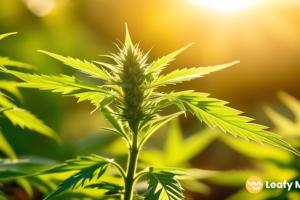
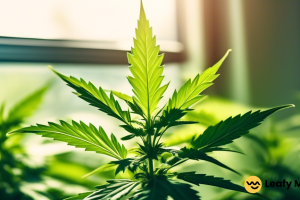





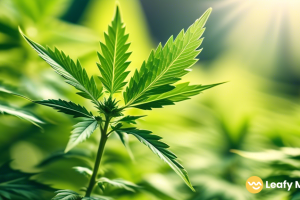
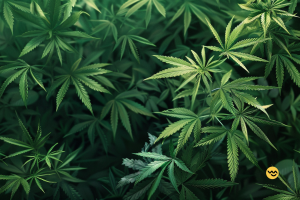
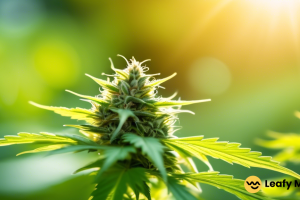
Leave a Reply